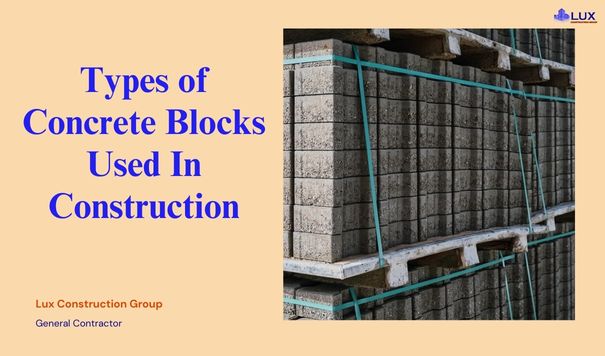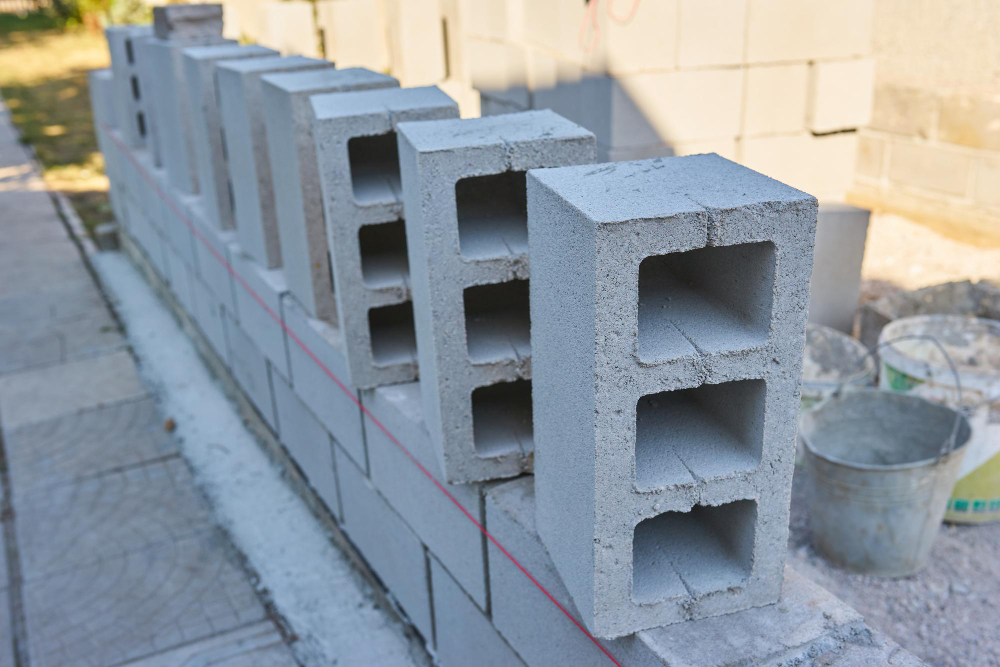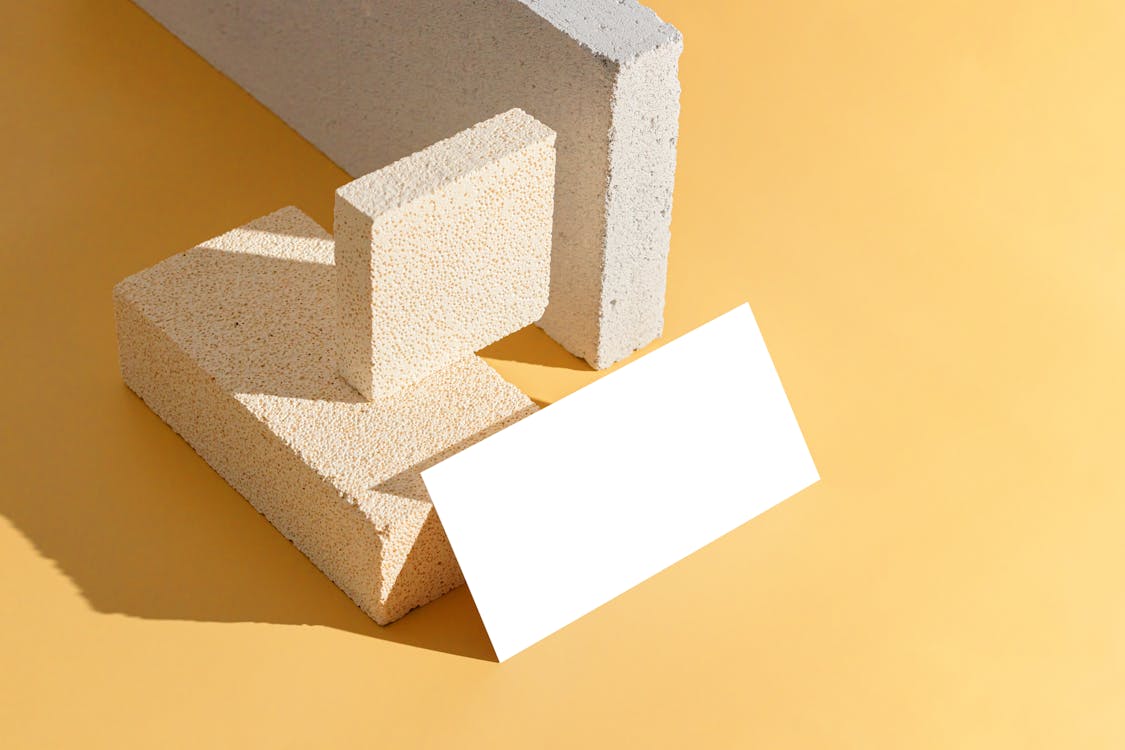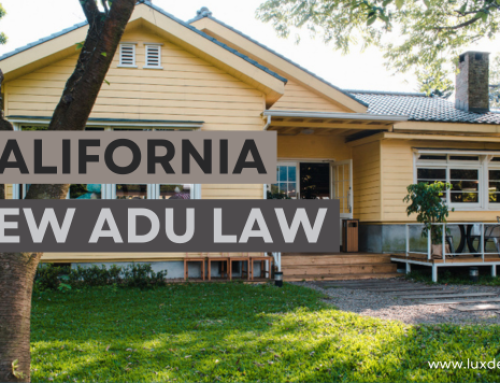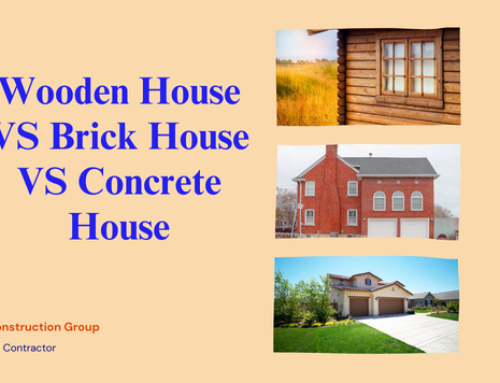Concrete blocks are an essential building material used in construction for their durability, versatility, and ease of use.
It is important to know the different types of concrete blocks you can choose for your project, whether you are constructing a home, an office, or a commercial building.
These blocks come in various shapes, sizes, and compositions, each designed to meet specific construction needs.
From hollow blocks that provide excellent insulation and reduce weight, to solid blocks that offer robust support, each type plays a crucial role in modern construction.
Knowing which type to use can significantly affect the strength, efficiency, and cost-effectiveness of your building project. Furthermore, these blocks are made from readily available materials, making them a cost-effective choice for many builders.
In this guide, we will explain the different types of concrete blocks, their unique properties, and their best uses in simple terms.
Contents
What Are the Different Types of Concrete Blocks?
Concrete block masonry is a great alternative to bricks and stone for building walls, pillars, and other structures. These blocks, also known as concrete masonry units (CMUs), offer many benefits:
- They cost less in terms of materials and maintenance.
- They are easier to handle because they are lighter.
- They provide better insulation against dampness, heat, and sound.
- They speed up construction since they don’t require extra finishing work.
Concrete blocks come in a variety of compositions, styles, and sizes. Knowing the different types and picking the right ones can make your construction project successful and efficient.
Concrete blocks come in two main types: Hollow Concrete Blocks and Solid Concrete Blocks.
Both types are useful for more than just building walls; they have various applications. Solid concrete blocks aren’t always completely solid, but they are denser than hollow blocks. Let’s dive into the details.
Hollow Concrete Blocks
Hollow concrete blocks are lightweight and have empty spaces inside, making them easier to handle and more affordable than solid blocks. They are used for building walls, retaining walls, and decorative features, and can hold electrical wiring, pipes, and reinforcement bars.
Available in various shapes and sizes, these versatile blocks are suitable for load-bearing walls and sound barriers. They remain a popular choice in modern construction for both residential and commercial buildings.
Hollow concrete blocks are classified into three grades based on their density:
- Grade A: These blocks have a minimum density of 1,500 kg/m³.
- Grade B: These blocks have a density of less than 1,500 kg/m³.
- Grade C: These blocks have a density greater than 1,000 kg/m³.
Grades A and B are suitable for load-bearing walls, providing strong support for structures. Grade C is used for non-load-bearing walls, offering a lightweight option where less strength is needed.
Types of Hollow Blocks
Hollow concrete blocks come in various sizes, such as 100 mm x 200 mm x 400 mm, 150 mm x 200 mm x 400 mm, and 200 mm x 200 mm x 400 mm.
Typically gray, they can also be found in colors like tan and dark red. Here are the different types of hollow concrete blocks:
-
Bullnose Block
Bullnose blocks are similar to corner blocks but have rounded edges, which give a softer, more finished look to the corners of structures.
These blocks are used when a rounded appearance is desired, such as in the corners of buildings, garden walls, or other structures.
-
Column Block
Column blocks are typically square-shaped with a single hole in the center. These blocks are stacked to create columns, with reinforcement bars inserted into the holes to provide additional strength and stability.
Column blocks are used in various structural applications, including support columns in buildings and decorative columns in landscaping.
-
Corner Block
Corner blocks are designed for use at the corners of walls and around door and window openings. They have one plain side that is exposed to the exterior and another side that runs parallel to the wall.
These blocks help create a neat and strong corner in the masonry, ensuring the integrity of the structure.
-
Jamb Block
Jamb blocks have a shallow groove across two holes and a deeper groove at one end. They are specifically designed for window installations, particularly double-hung windows.
The grooves provide space for the window casing members, ensuring a snug fit and additional structural support around the window openings.
-
Lintel Block
Lintel blocks, also called beam or channeled blocks, are distinguished by their U-shape, which runs along the length of the block. This shape allows for the insertion of reinforcing bars and concrete, forming a strong beam over door and window openings.
These blocks are crucial in distributing the load from above, preventing structural failures, and providing additional support.
-
Partition Block
Partition blocks are taller than they are wide and have hollow sections. These blocks are used to construct partition walls, which are non-load-bearing walls that divide spaces within a building.
The hollow sections reduce the weight of the wall and provide space for insulation or electrical conduits.
-
Pillar Block
Also known as double corner blocks, pillar blocks are primarily used to build pillars or piers. Both ends of these blocks can be left visible, making them suitable for structures where the appearance of the pillar is important.
These blocks are common in both residential and commercial construction and can be easily found in large quantities at building supply stores.
-
Splitface Block
Splitface blocks resemble pillar blocks but feature a rough, textured edge that exposes the inner aggregates of the block. This texture gives the block a unique, decorative appearance.
Splitface blocks are porous, making them resistant to fire and termite damage. However, their porosity can make them susceptible to water damage, so they are often used in areas where water exposure is minimal.
-
Stretcher Block
Stretcher blocks are used in construction to connect the corners of masonry units. They are laid parallel to the face of the wall, providing stability and continuity in the wall structure.
These blocks are essential for forming long walls and are a fundamental component in the construction of load-bearing and non-load-bearing walls.
-
Insulated Concrete Form Block (ICF)
Insulated Concrete Form (ICF) blocks combine reinforced concrete with layers of foam insulation, providing excellent energy efficiency and structural strength. These blocks are easy to assemble, highly insulating, and soundproof, making them ideal for residential and commercial construction.
ICF blocks reduce heating and coolitconcng costs, offer great fire resistance, and improve indoor air quality by minimizing air leaks and preventing mold growth. They are versatile and compatible with traditional finishing materials, suitable for foundations, walls, and roofs.
-
Frogged Brick Block
Frogged brick blocks have an indentation, or “frog,” on the top surface, along with header and stretcher faces like traditional bricks.
This frog helps hold mortar and creates a strong bond with the block above. Frogged brick blocks are used in masonry construction to improve the stability and integrity of the wall.
Solid Concrete Blocks
Solid concrete blocks look like large grey bricks. They are great for building strong walls that can withstand harsh weather, like strong winds.
These blocks are also ideal for garden walls, planters, retaining walls, foundations, steps, and firepits. Although heavier than hollow blocks, solid concrete blocks are often cheaper.
Types of Solid Concrete Blocks
When it comes to solid concrete blocks, you have fewer options compared to hollow blocks, but there is still a variety to choose from for different purposes.
-
Aerated Autoclaved Block
AAC blocks are lightweight and provide excellent sound and temperature insulation. They are made up of 80% air, which makes them easy to shape and allows for the use of nails and screws.
However, AAC blocks are not as strong as denser concrete options and often need to be reinforced for load-bearing purposes. They come in white to light gray and can be used for sidewalls, partition walls, and other types of wall construction.
These blocks are available in various shapes, including panels, lintel blocks, and U-shaped bond beam blocks.
-
Cellular Lightweight Block
Cellular lightweight blocks are made from a mixture of foam, fly ash, and cement. They provide good insulation against sound and extreme temperatures, are fire-resistant, environmentally friendly, and relatively inexpensive.
These light gray blocks have been around since the 1930s and can be made in various sizes. They are used for wall panels, compound walls, and parapet walls.
High-density cellular lightweight blocks are suitable for load-bearing or partitioning walls, while medium densities are used for non-load-bearing brickwork.
-
Expanded Clay Aggregate Block
Expanded clay aggregate blocks are made from lightweight aggregates of fly ash and cement.
These blocks are waterproof, fire-resistant, and can reduce the overall structural load by up to 50%. They also provide good insulation against sound and temperature.
Because they are fired in a kiln, these blocks can be molded into different sizes and densities. They are used in various construction applications due to their durability and versatility.
-
Fly Ash Block
Fly ash blocks are made from a fine, powdery substance that forms a cement-like material when mixed with water. This material, fly ash, is often used in road projects to save costs.
There are two classes of fly ash: Class C, which is high in calcium and can make up 15% to 40% of cement material, and Class F, which has a lower calcium content and makes up 15% to 25% of cement material.
Using fly ash can reduce CO2 emissions, resist cold weather, and reduce cracking problems. These blocks usually come in small sizes because larger sizes tend to crack more easily.
-
Paving Block
Paving blocks are solid, square, or rectangular blocks used for paving roads, walkways, and road shoulders.
They come in a variety of sizes and colors, including sandstone, tan, dark brown, charcoal, and light gray. These blocks are often used for their durability and aesthetic appeal.
Conclusion!
In short, we can say that concrete blocks are vital for various construction projects, including roadways, load-bearing walls, and partitions. Choosing the right block depends on its intended use, required properties, and budget.
Dense or lightweight options offer different benefits, such as insulation or reinforcement needs.
Consider these factors from the beginning of your project to ensure its success and safety.
For any questions or assistance, reach out to LUX Construction Group today. We’re here to help you make informed decisions and achieve the best results.

